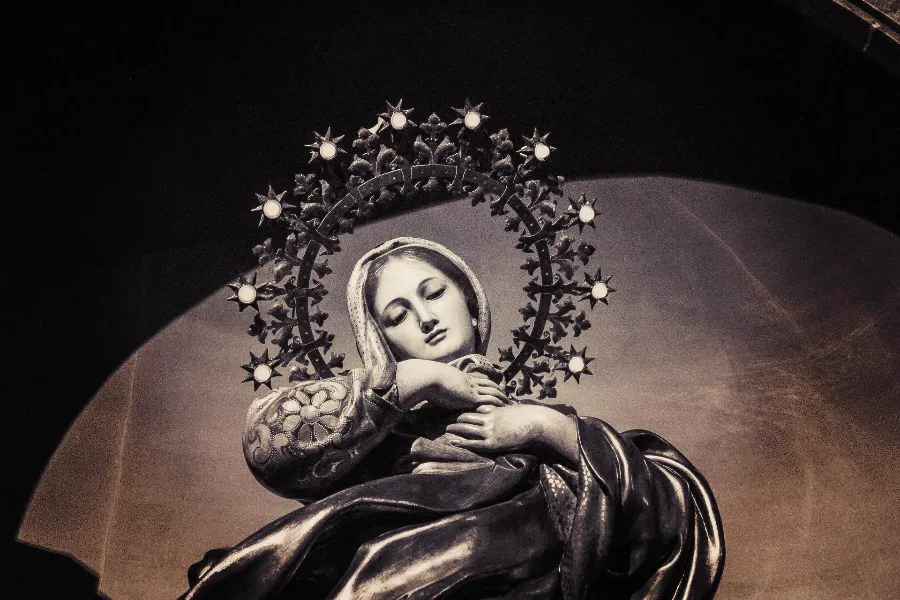James the Just, the brother of Jesus, is the central figure in the Infancy Gospel of James, which is also referred to as the Proto-Gospel of James. According to historical accounts, James met a tragic end, either being clubbed to death, as stated by Clement of Alexandria, or being stoned to death, as claimed by Hegesippus. Josephus also mentions the stoning as the cause of James’ death. The exact date of his demise is debated, with some narratives placing it in 62 AD and others in 69 AD.
It is important to note that the correct name for James is Ya’ahov, which translates to Jacob. The term Protoevangelium is derived from the Old Testament word “Evangelion,” which signifies good news. Therefore, the Protoevangelium of James can be understood as the good news about Jacob or James.
The Infancy Gospel of James originated during the 2nd century AD and gained popularity in the 4th century AD through the works of Hippolytus and Origen.
In summary, James the Just’s significance is captured in the Infancy Gospel of James, also known as the Proto-Gospel of James. This text sheds light on his tragic fate, whether it was death by clubbing or stoning. The name James is properly Ya’ahov, and the Protoevangelium of James signifies the good news surrounding Jacob or James. This gospel emerged in the 2nd century AD and gained prominence in the 4th century AD through the efforts of Hippolytus and Origen.
When was the Infancy Gospel of James written?

The Infancy Gospel of James draws heavily from the texts of Matthew and Luke, which are believed to have been written after 70 AD, specifically in the 80s AD. Based on scholarly analysis, it is generally agreed that the Infancy Gospel of James was likely composed in the latter half of the 2nd century AD. It is important to note that these estimations are subject to ongoing research and debate among experts in the field.
Considering the supplementary objectives and instructions, it is my aim to provide a clear and knowledgeable response. The Infancy Gospel of James, a text that takes inspiration from the Gospel of Matthew and the Gospel of Luke, is widely regarded to have been written after 70 AD, specifically in the 80s AD. Scholars generally posit that the composition of this text occurred during the latter half of the 2nd century AD. However, it is worth noting that the dating of ancient texts is a complex and ongoing process, subject to ongoing research and scholarly debate.
Who wrote the infancy gospel of James?

The Infancy Gospel of James begins with a claim from the author, stating “I, James, who wrote this account.” However, it is highly unlikely that the actual James, brother of Jesus, wrote this gospel. James would have likely been illiterate or would have written in Hebrew rather than Greek. The true author of this text remains unknown, making it difficult to speculate on potential suspects. In contrast, with the Gospel of Thomas, we have more information to narrow down the possibilities. Therefore, the question of who wrote the infancy gospel of James remains a mystery.
What is the Infancy Gospel of James?

The Infancy Gospel of James holds significant attribution to James, the brother of Jesus. This concise text spans approximately 30 to 40 pages. Unlike the Infancy Gospel of Thomas, which focuses on the mischievous nature of the young Jesus, the Gospel of James delves into the virtues of Mary, the mother of Jesus, as well as her relationship with him. Although Joseph, Jesus’ earthly father, is not mentioned after the Christmas story in the canonical gospels, Mary is prominently named and plays a role in Jesus’ adult life in all four gospels. While the Gospel of John does not explicitly name her, the Infancy Gospel of James refers to her as “the mother of Jesus” or simply “Mary”.
Interestingly, most of our knowledge about Mary does not stem from the New Testament itself, but rather from the Gospel of James, which was excluded from the New Testament. The concept of Mary giving birth as a virgin is present in the Gospels of Luke and Matthew, but it lacks the intricate details found in the Infancy Gospel of James. Many elements in the New Testament regarding Mary are rooted in the Gospel of James, such as the belief in the Immaculate Conception. A significant number of Pauline Christians firmly believe that Mary, not Jesus, was conceived immaculately without sin and lived a sinless life, with her pregnancy being a result of the Holy Spirit. This religious concept does not originate from Matthew or Luke, but rather from the Infancy Gospel of James, which was adopted by orthodox churches and became their doctrine.
In the canonical Gospels, Mary is depicted as a young woman, whereas the age of Joseph is not specified. It is worth noting that the Infancy Gospel of James is the source of the tradition that often portrays Joseph as an elderly man.
Mary’s Perpetual Virginity

• According to Infancy James, it is believed that Mary maintained her virginity throughout her entire life.
• The siblings of Jesus are often explained as being older children of Joseph from a previous marriage, as it is believed that Joseph was widowed before marrying Mary.
• As Joseph is considered to be Jesus’ adoptive father, it is also believed that James, Jude, Thomas, and the other siblings are considered to be adopted brothers and sisters of Jesus.
Mary’s Parents

The Gospel of James commences by introducing us to Mary’s devoted parents, Joachim and Anna. Drawing inspiration from the biblical accounts of Abram and Sarai in Genesis, as well as the remarkable stories of Samson and Samuel’s mothers (Hannah) and John the Baptist’s mother (Elizabeth), the text unfolds a tale of Anna’s longing to conceive a child. Despite enduring continuous ridicule, Anna turns to prayer, seeking a divine intervention. In a moment of profound grace, an angel of the Lord hears her supplications and bestows upon her the incredible news that she will bear the mother of the long-awaited Messiah. Overwhelmed with joy, Anna’s heart overflows with gratitude as she praises the Almighty, Yahweh, for answering her heartfelt prayers. This remarkable account captures the profound faith, resilience, and divine intervention that shaped the story of Mary’s birth and sets the stage for the miraculous events to come.
Mary’s birth

– Anna experiences a miraculous birth, bringing forth a baby girl whom she names Mary.
– At the age of three, Mary’s parents fulfill a promise they made and entrust her to the care of priests, who raise her within the sacred confines of the temple.
– The Gospel of James recounts the life of Mary, the mother of Jesus, drawing from the apocryphal book known as Protevangelium of James.
– According to the Infancy Gospel of James, Mary resided in the Temple of the Lord, where she was nurtured in a tender manner, akin to that of a dove, and even received sustenance from the hand of an angel.
Joseph selected as the father

In the temple where Mary resided, an angel appeared before the priest’s boss and conveyed a message to gather all the widowers. It was revealed that God had specifically chosen Joseph to become Mary’s husband.
Joseph Selected As The Father: A Divine Sign Unveiled
In a moment of divine intervention, an angel gracefully descended upon the temple, seeking an audience with the esteemed leader of the priest. With utmost reverence, the celestial being shared a profound directive: the assembly of all widowers. It was to be a momentous occasion, for within this gathering, a divine sign would be unveiled.
With unwavering certainty, it became evident that Joseph, a virtuous and righteous man, was destined to marry Mary, the chosen vessel of God’s grace. His selection carried an immense weight, a significant role in the unfolding of a sacred plan.
As the chosen father, Joseph’s path intertwined with Mary’s, their union blessed by the heavens themselves. The intricate tapestry of their lives was intricately woven, guided by higher powers beyond mortal comprehension.
In this remarkable tale, we witness the hand of destiny at play, as God’s grand design beautifully unfolds. Joseph’s role as the father figure signifies not only a remarkable union but also a divine affirmation of faith, love, and purpose.
Summary of Infancy Gospel of James
The author of the Gospel of James, much like in other contemporary Gospels, seeks to emphasise the divine nature of Jesus through the portrayal of miracles. Additionally, this Gospel aims to reinforce the validity of the Christian and Jewish faith by providing a detailed account of Jesus’ life. It is indeed surprising that the Catholic and Orthodox churches have chosen not to include the Gospel of James in the Bible, as it contains valuable information that could contribute to a specific narrative.
Taking these objectives into consideration, I will now provide a summary that embodies a clear, knowledgeable, and personal voice, while ensuring the sentences are interesting.
Summary: In the Gospel of James, the author endeavours to highlight the divine qualities of Jesus, much like other Gospels of that era. Through the depiction of miraculous acts, the author seeks to demonstrate the greatness of Jesus and strengthen the foundations of the Christian and Jewish faith. It is intriguing that the Catholic and Orthodox churches have not included this gospel in the Bible, considering the substantial amount of information it provides, which could potentially support a particular narrative.

